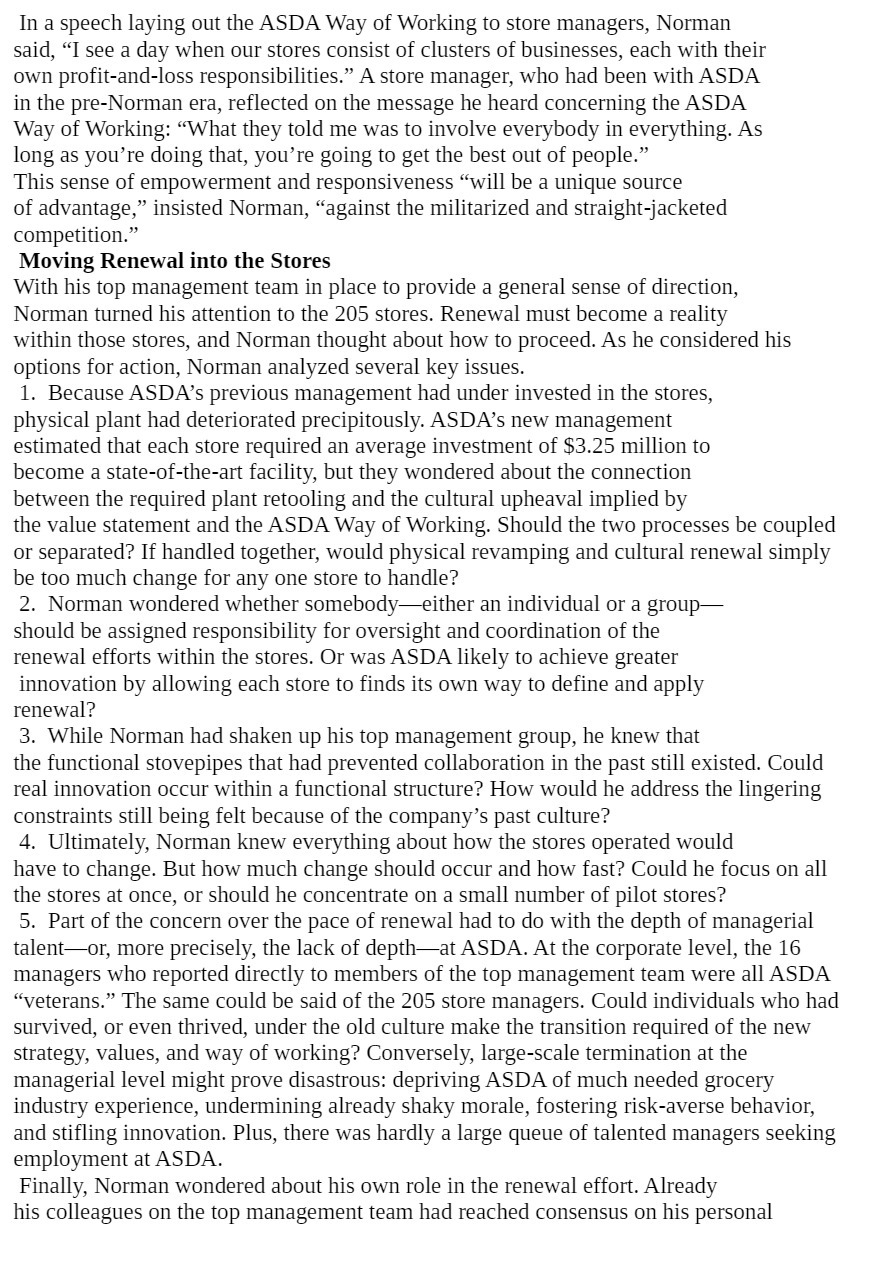In a speech laying out the ASDA Way of Working to store managers, Norman said, \"I see a day when our stores consist of clusters of businesses, each with their own profit-and-loss responsibilities.\" A store manager, who had been with ASDA in the pre-Norman era, reected on the message he heard concerning the ASDA Way of Working: \"What they told me was to involve everybody in everything. As long as you're doing that, you're going to get the best out of people.\" This sense of empowerment and responsiveness \"will be a unique source of advantage,\" insisted Norman, \"against the militarized and straight-jacketed competition.\" Moving Renewal into the Stores With his top management team in place to provide a general sense of direction, Norman turned his attention to the 205 stores. Renewal must become a reality within those stores, and Norman thought about how to proceed. As he considered his options for action, Norman analyzed several key issues. 1. Because ASDA's previous management had under invested in the stores, physical plant had deteriorated precipitously. ASDA's new management estimated that each store required an average investment of $3.25 million to become a state-of-the-art facility, but they wondered about the connection between the required plant retooling and the cultural upheaval implied by the value statement and the ASDA Way of Working. Should the two processes be coupled or separated? If handled together, would physical revamping and cultural renewal simply be too much change for any one store to handle? 2. Norman wondered whether somebodyeither an individual or a group should be assigned responsibility for oversight and coordination of the renewal efforts within the stores. Or was ASDA likely to achieve greater innovation by allowing each store to finds its own way to define and apply renewal? 3. While Norman had shaken up his top management group, he knew that the functional stovepipes that had prevented collaboration in the past still existed. Could real innovation occur within a functional structure? How would he address the lingering constraints still being felt because of the company's past culture? 4. Ultimately, Norman knew everything about how the stores operated would have to change. But how much change should occur and how fast? Could he focus on all the stores at once, or should he concentrate on a small number of pilot stores? 5. Part of the concern over the pace of renewal had to do with the depth of managerial talentor, more precisely, the lack of depthat ASDA. At the corporate level, the 16 managers who reported directly to members of the top management team were all ASDA \"veterans.\" The same could be said of the 205 store managers. Could individuals who had survived, or even thrived, under the old culture make the transition required of the new strategy, values, and way of working? Conversely, largescale termination at the managerial level might prove disastrous: depriving ASDA of much needed grocery industry experience, undermining already shaky morale, fostering risk-averse behavior, and stifling innovation. Plus, there was hardly a large queue of talented managers seeking employment at ASDA. Finally, Norman wondered about his own role in the renewal effort. Already his colleagues on the top management team had reached consensus on his personal







